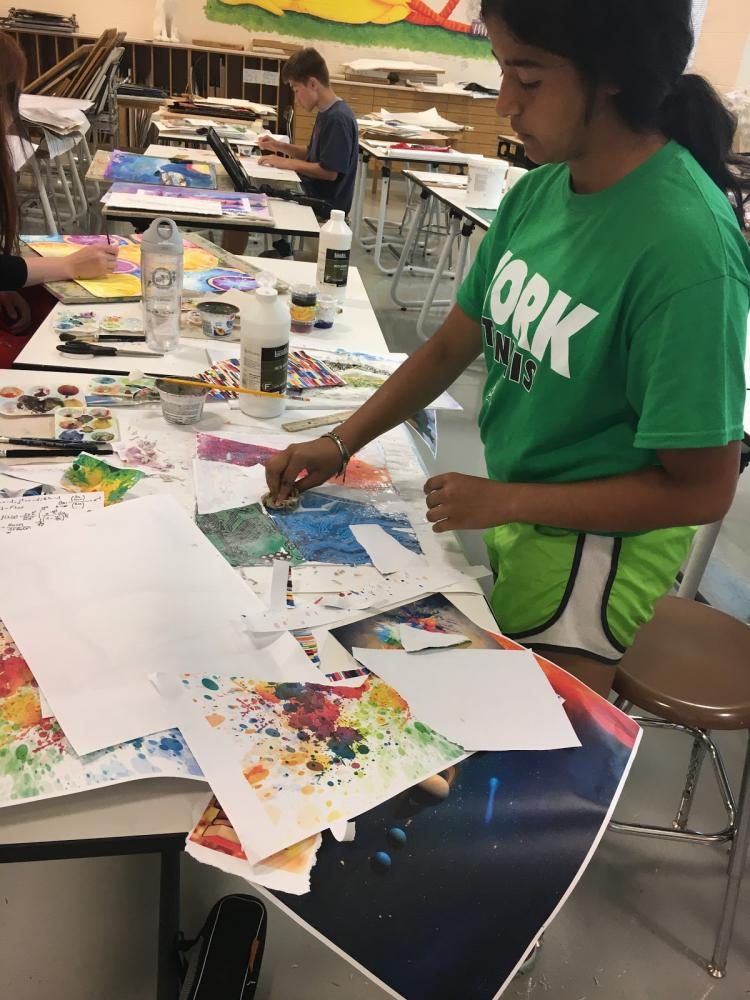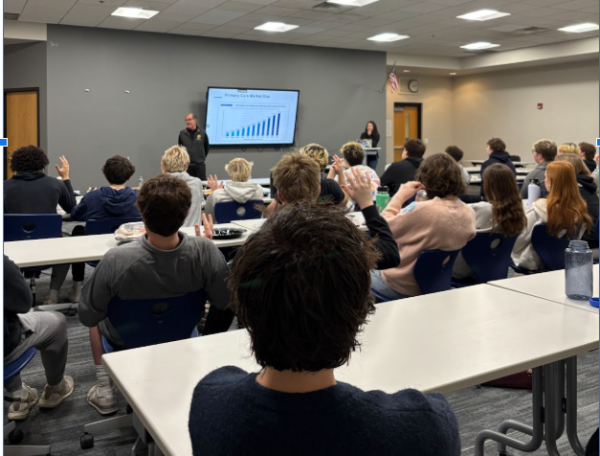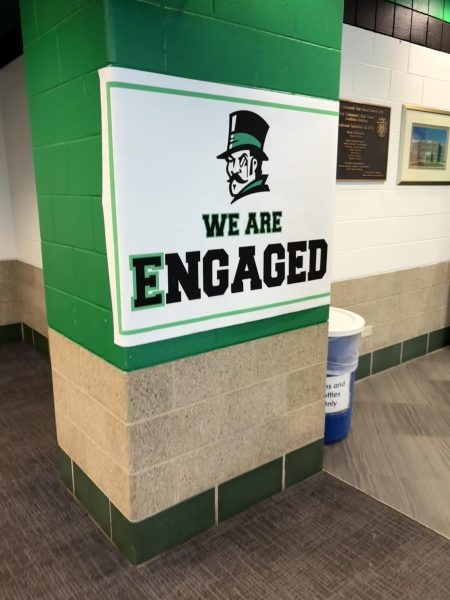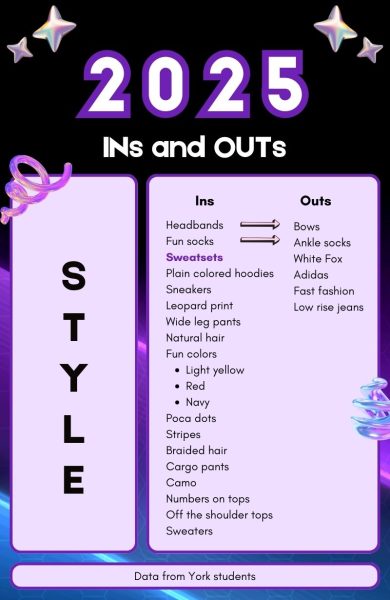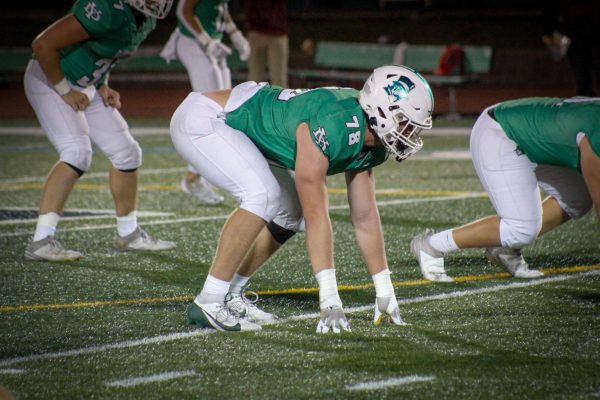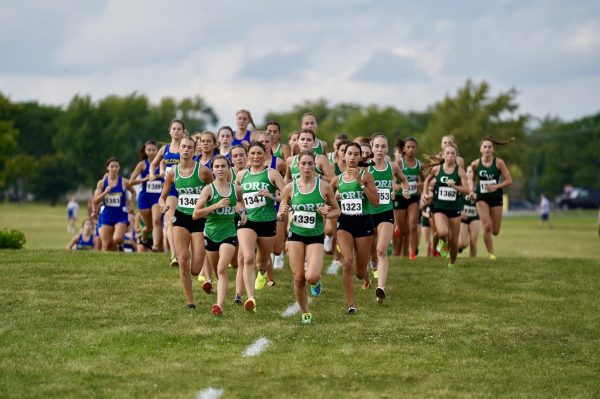Alternative Art students explored countless art styles this summer
Sonali Kumar works on a collage painting.
Six students crowd around a painting on the grass by the side of the school and discuss details as they each shake various cans of spray paint. The mural is in its final stages, the drip paint background is done, and only it needs a couple more things added. Outlines, shadows, and highlights are sprayed onto the painting of the skyline of Chicago, complete with the Bean painted silver with a mauvey purple border.
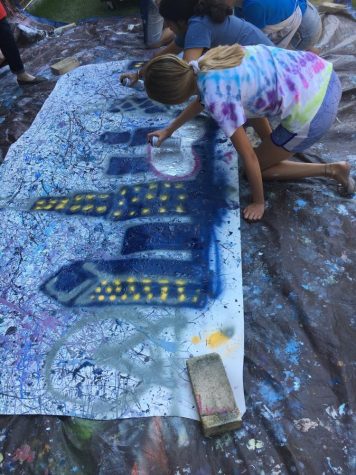
The alternative art class works on the mural of the Chicago skyline.
This summer York once again offered students the opportunity to take an alternative art class in which they partake in many different projects that each utilize a different technique and media. Students were led by art teacher Renee Kuharchuk who encouraged them to experiment with various methods of painting.
“We explore specific techniques that are a little bit different than the normal curriculums,” Kuharchuk said. “So like mixing two different mediums together, like watercolor and acrylic, exploring the techniques more within each of those mediums.”
Alternative art combines the techniques and media of many different painting styles. This includes watercolor, oil, acrylic, drip, and spray painting. Alternative art can also be three-dimensional. Because of the wide variety of techniques, there can be many more options on how to create an art piece than other traditional art styles that are strictly oil or watercolor painting.
“It’s not like you’re just sticking to one thing,” freshman Claire Isacson said. “You get to do a lot of different things.”
In most classes, students are taught to reflect the skills that they were taught. However, in art classes, the projects are a lot more open ended. Students are given a prompt that will give the product that shows if they learned the technique. For instance, to show the use of texture, the prompt might be to paint a food, any food, as long as it has a lot of texture. With a vague prompt, students can still be creative while following the guidelines.
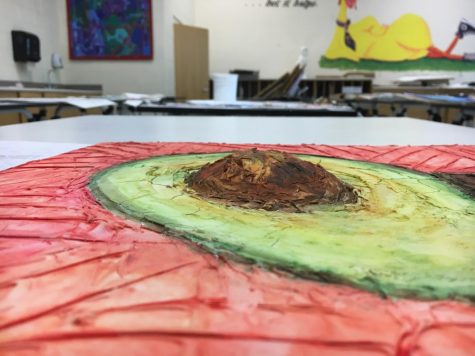
A finished three-dimensional painting of an avocado by Claire Isacson.
Despite the difference in the work produced, art classes and core academic classes both utilize group projects to showcase learned skills. The students all work together to make a class mural. It was made by the students spray painting and drip painting. Spray painting is a less common art media that most of the students had not used before.
“It was really fun to try something new,” Isacson said.
Alternative art is taught in a similar fashion to other classes. First, a new technique is demonstrated, like a new concept, and then students do work to show that they have grasped the skill. A lot of class time is dedicated to individual work time. This time is essential for students to create original pieces.
Kuharchuk has a background in many types of art. During the school year, she teaches hand-building ceramics, advanced ceramics, and clay sculpture. She also does a lot of painting and three-dimensional art through the use of clay, metal and welding. Kuharchuk just recently started to use spray paints and so she added that to the curriculum of the alternative art class.
“I love learning new things,” Kuharchuk said. “And so I like to explore and share that with students.”
Most of the students in this class have little to no experience in art. Most have not taken any art classes besides the alternative art class. However, this does not deter them from making art using all kinds of techniques and paints.
“I like that it’s something easy, something that almost anyone can do,” Isacson said.
Most students would recommend taking the alternative art class because it introduces many different art medias.
“If anyone is wondering what type of media they like this is like the class to do it,” Junior Sonali Kumar said. “Because you experience all of it.”
Alternative art fulfills the fine arts credit but it is only offered during the summer. So, the class sizes are usually small. This year there were only six students. Over the past however, there have been about ten to twelve students enrolled. The students often work individually on many projects, but the small class size allows full class projects to be made easily. Also, the atmosphere of a small, quiet class gives a good setting for productivity.
“I like it because I just get to come here for like five hours a day and just paint,” freshman Addison McClair said. “It’s very therapeutic and relaxing.”
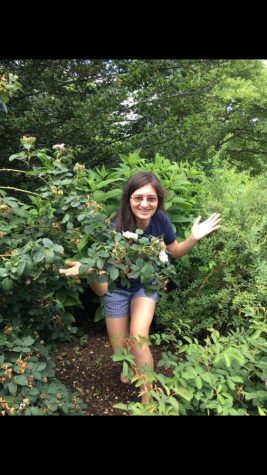
This is Julie Friedman's first year on the York-hi staff. She is a sophomore and is in Mural Club, Key Club, and Science Olympiad. In her precious moments...


